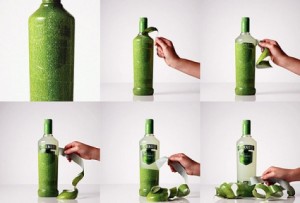
Photo © Michael Sommers.
In recent years, caipirinhas—the quintessential Brazilian cocktail of cachaça, sugar, crushed lime and ice—have become as synonymous with Brazil as margaritas with Mexico and sangrias with Spain.However, long before gaining international acclaim as a refreshing and potent prelude to digging into a hearty feijoada or samba-ing the night away, the caipirinha (originally made with honey and garlic instead of sugar) was a popular home remedy that proved useful in helping to combat colds and flu (at the very least, the afflicted were treated to a nice buzz).
Although its precise origins are vague, the “caipi” is believed to have surfaced somewhere in the Interior of São Paulo state, which explains the beverage’s name; “caipira” is slang for a hayseed, hick, or hillbilly. Indeed, for a long time, cachaça itself retained a certain stigma among Brazil’s upper classes.
Produced from fermented sugar cane juice, it began life as a drink imbibed by African slaves who worked on colonial sugarcane plantations.Produced from fermented sugar cane juice, it began life as a drink imbibed by African slaves who worked on colonial sugarcane plantations. Later, the cheap rotgut made in rural alambics, and churned out in industrial plants, gained renown as a poor man’s poison.
Some of this lingering stigma explains why, in Brazil, vodka is sometimes substituted for cachaça—although in recent years, the production of high quality artisanal and organic cachaças have refined the reputation of the once lowly pinga (cachaça’s most popular nickname literally means “drop”). Another reason for the substitution is that vodka’s presence is smoother and more subtle than cachaça’s.
The upshot is that travelers to Brazil will often encounter bar menus that offer not just caipirinhas, but caipiroskas (also known as caipivodkas) as well. They’ll also find themselves faced with caipis (produced with either alcohol) in which the tried, true, and traditional lime is exchanged for any number of alternative fruits, ranging from regional (siriguela, umbu, cupuaçu—three of my personal faves) to global (strawberry, kiwi, melon), and sometimes featuring innovative extras such as pimenta, mint, ginger, or thyme.
Anyway, the reason caipis are on my mind (as opposed to in my hand) today is that I came across this inspired marketing campaign for the new and improved Smirnoff Caipiroska. As shown above, the bottles in the promotional kit are wrapped within a “skin” that imitates the color and texture of each caipi’s main ingredient – limes, strawberries, and passion fruit. Not only does the packaging make for great eye candy, but to sample the wares, you have to “unpeel” the bottle as you would the fruit!
Ideas such as this are definitely worth drinking to.